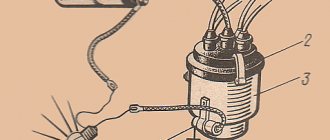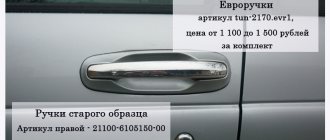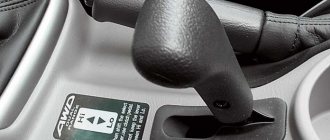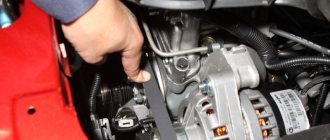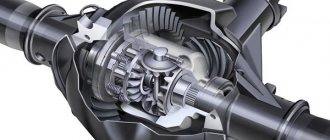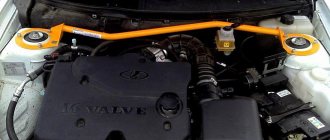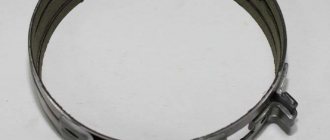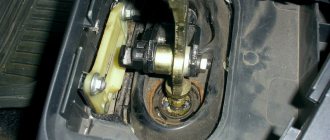Types, classification and purpose: briefly about the main thing
The difference between roller type couplings and those with a ratcheting mechanism is only in the mechanism for engaging the outer and inner coupling halves. In a ratchet-type coupling, in the outer ring, instead of engagement grooves, there are teeth with emphasis on one side - with the help of a friction spring, both coupling halves engage with each other due to the teeth, which ensures the blocking of the unit.
The design purpose and advantages of using both types of couplings in transmissions are similar - among the advantages of the coupling connection, the following stand out:
- Simplicity of the device and ease of maintenance.
- Simplification of the design of the transmission unit.
- Autonomous operation of the unit and no need to use control drives.
Moreover, each type of coupling has its own set of disadvantages. The main disadvantages of a roller type coupling include:
- High labor costs during production.
- Requirements for the alignment of coupling halves during installation.
- Lack of adjustment options.
Among the disadvantages of a unit with a ratcheting mechanism, it is customary to highlight:
- Accelerated wear and greater load on the part when engaged.
- Increased noise level during operation.
- Impossibility of installation on high-speed transmission elements.
The freewheel is considered a structural component of the torque converter of a classic hydromechanical transmission, but is also used in the design of the generator and vehicle starter as a protective mechanism that limits torque and reverse oscillations.
Purpose
The function of the clutch is to remove inertia from the rotor, which is applied to the generator belt. This allows you to extend its service life from 30 thousand km. (as it was before, before the development of the device) up to 100 thousand km.
Jamming.
This is the most common malfunction. Occurs after 100-150 thousand kilometers. Unfortunately, the overrunning clutch is maintenance-free and has a finite life.
Jamming is unpleasant because it hardly manifests itself until the belt reaches critical wear (except that the tensioner jerks). Once the belt wears out, it will either squeak or come off.
Slipping.
If the overrunning clutch slips slightly, the generator will not develop full power. You'll see this in the voltage indicator, difficulty starting, and dimming of the headlights.
If measures are not taken in time, the overrunning clutch will completely lose contact with the generator armature and will rotate on its own.
You will see this by the lit no charge indicator:
With a high degree of probability, slippage of the generator overrunning clutch will be accompanied by whistling and noise.
Naturally, with such a malfunction you won’t be able to drive for long. You can simply stand in the middle of the road or not start the car after parking.
Device
The generator overrunning clutch consists of two cages:
- external, connected to the generator pulley;
- internal, connected to the generator armature shaft;
Between them there is a layer of special rollers laid in two layers:
- Level 1 - needle bearings;
- Level 2 - profiled figures. They are needed to act as a locking mechanism.
These clips are integrated into each other.
Principle of operation
When the engine starts running, the rotation of the outer clutch race begins to increase. The rollers acting as a locking device are locked. In this case, the outer part is connected to the inner one. At the same time, the generator shaft and pulley unwind.
When work stops, exhaust gases begin to escape. This slows down the rotation of the crankshaft. The inner part of the cage is faster than the outer one in rotation. At the same time, the locking mechanism opens and its connection with the outer part of the coupling becomes weaker. Because of this, the inner race stops braking.
This is a full cycle of operation of the device unit. One process follows another. In this case, the inertia from the belt is transferred to the pulley and the generator belt.
More about the device
Now let's look at the overrunning clutch device in detail. Despite the fact that its circuit may seem quite simple, it is a complex device in its own way, each element in which is clearly adjusted to the adjacent one and performs its role. So, here's what a car alternator overrunning clutch includes:
- An outer ring with special grooves on the inner surface;
- A series of springs on the outer ring pushing out the rollers;
- Inner ring;
- Rollers that transmit torque when the cages are closed.
There are also ratchet clutches that have unidirectional teeth on the inner surface instead of slots with rollers. As with the more common roller clutches, ratchets have a pawl that is pressed against the outer ring by spring force, thereby locking the races and allowing them to rotate at the same speed . As you might guess, such couplings work automatically - exclusively mechanical elements are responsible for closing the rings, which provides the entire device not only with high performance, but also with high wear resistance.
Action of automatic transmission overrunning clutches
Typically, automatic transmissions (automatic transmissions) consist of a torque converter, planetary gearboxes, friction and overrunning clutches, connecting shafts and drums. For their functional use, brake bands are also attached. The overrunning clutch plays a significant role in the operation of automatic transmissions. Overrunning clutches are widely used in automatic transmissions because their action makes the process of controlling the quality of first gear engagement simpler, because it requires attention to only one control element. In certain cases, it is more profitable to move the vehicle without using the engine braking function - here the automatic transmission overrunning clutch also becomes useful. Speaking about overrunning clutches used in automatic transmissions, we will pay special attention to the overrunning clutches of the KIA Sportage. Here it is worth paying attention to two types of overrunning clutches. The first of them prevents the sun gear of the planetary gear from rotating counterclockwise when the disc brake is applied to gears above the second when driving in mode “d” At. The outer ring of the clutch is part of the brake hub, and the inner ring is part of the planetary sun gear. When the driver releases the brake, the sun gear rotates counterclockwise and the clutch locks remain disengaged. When the driver applies the brake mechanism, the sun gear stops turning counterclockwise, it is blocked by the overrunning clutch locks. The second type of overrunning clutches for the Kia Sportage is used exclusively in first gear in modes “d” and “2” At, if necessary, to quickly accelerate. The outer ring of the clutch is part of the carrier of the front row of the rear planetary assembly, and the inner ring is part of the support bar of the disc brake of the “l” and “r” modes. The effect of this type is that the clutch blocks the counterclockwise rotation of the carrier holder of the front row of the rear planetary mounting. How to purchase the correct overrunning clutch? If you are going to buy an overrunning clutch, first of all make sure you get high-quality and competent advice. Pay special attention to the authenticity of the brand you are purchasing. The prices of overrunning clutches range from several thousand rubles to several hundred thousand. When choosing an overrunning clutch, pay attention to compliance with the quality indicators necessary for the operation of specific equipment. You can buy an overrunning clutch either by hand or by special order, both in an online store and on store or market counters.
Manufacturers of inertial pulleys
In addition to original spare parts, the most common are INA and Ruville couplings; the quality of parts from these companies is quite acceptable. in the creation of overrunning clutches, she first presented an innovative solution to the world in 1995. In addition to these manufacturers, spare parts are also produced by:
Depending on the manufacturer and model of the car, the cost of an inertial pulley can range from 1,300 to 9,000 rubles. By the way, OMGs are also developed for AvtoVAZ cars - clutches for the VAZ-2110 are produced under the Eldix brand, the price of the spare part in 2017 is approximately 1,700 rubles, and a plug is supplied with the overrunning mechanism.
To change the overrunning clutch of the Nissan X-TRail generator, you need to remove the generator itself.
But first of all, we remove the generator drive belt. How to remove it, see another article: Replacing the drive belt of the Nissan X-Trail generator.
After removing the belt, remove the block with wiring and unscrew the power wire. Then unscrew the two generator mounting bolts. (one on top, the second under the generator)
We take out the generator from under the hood.
We remove the protective cover from the coupling and use a special wrench to tear the coupling off the generator axle.
On many car models, the generator axle has a recess for a hexagon or Torx.
Which holds the generator shaft. But in this case this recess was absent. Therefore, all actions to remove and unscrew the generator trim were carried out with a pneumatic impact wrench (an electric impact wrench can also be used).
Having removed the damaged coupling, we replace it with a new one.
Common faults
The design of the generator coupling is somewhat similar to a rolling bearing, so if a malfunction occurs it can jam. This leads to the fact that the belt drive begins to wear out at an accelerated rate, since the moments of inertia are no longer compensated. Ultimately, the alternator belt will break and the tensioner will wear out - all these parts will have to be replaced.
To detect clutch malfunctions in a timely manner, you need to know their “symptoms”. The most characteristic signs are the following:
- rattling appears in the cabin (an experienced driver will not be able to confuse it with anything);
- when driving slowly, the car begins to vibrate;
- the belt begins to bounce;
- when the engine is turned on, a characteristic whistle is heard;
- The tensioner starts clicking.
If at least one of these signs appears, you should immediately contact a service station. The technician will have to diagnose the entire unit. If during diagnostic procedures it is revealed that the coupling is faulty, it will have to be replaced - such units cannot be repaired.
There is another typical malfunction, although it is less common - the clutch begins to spin in all directions. In this case, when rotating, the anchor is not connected to the holder in any way. It is more difficult to diagnose such a malfunction - you will definitely have to remove the generator. The probable cause is an undercharged battery.
Types of breakdowns and their causes
Typically, the overrunning clutch fails under the following circumstances:
- pulley malfunction;
- wear of the inner spring;
- the alternator belt is broken;
- mileage more than 100 thousand km;
- overrunning mechanism malfunction.
Failure rates
Signs of a malfunctioning alternator overrunning clutch:
- during operation, unnatural noises are heard from the generator;
- complete stoppage of generator operation;
- When the air conditioner is running or when the machine is moving slowly, a noticeable vibration occurs;
- belt whistle at high speeds;
- short crackling sound when starting or stopping the engine.
Defect detection
To diagnose the operation of the unit, you should spin the engine to 4 thousand revolutions. Then you need to turn on the ignition. You need to listen to the residual sound. If it resembles the sound of a turbine stopping, then the generator clutch is working properly. If there is none, then the mechanism requires replacement.
The coupling can also be checked in a dismantled state; to do this, do the following:
- pinch the inner ring with your fingers;
- turn the outer ring in the direction of belt rotation;
- When the outer race moves, the coupling fails and needs to be replaced.
You can do the same experiment. But it is necessary to rotate the outer race in the opposite direction. In this case, on the contrary, it should rotate. If this does not happen, then the part has failed.
Visual and auditory diagnostics without dismantling
- We turn on the engine in idle mode - when the belt tensioner is actively moving, the clutch is faulty.
- We accelerate the engine to 2 thousand revolutions and turn it off. A buzzing or whistling sound is a sign of faulty mechanism bearings. A cracking sound is evidence of clutch wear.
Methods for diagnosing a dismantled coupling
After visual diagnostic methods have shown the presence of a malfunction, we dismantle the coupling
. Upon closer inspection, you need to lock the inner race, and rotate the outer ring in the direction of its natural movement when working in the system or in the opposite direction.
If the inner race moves, the clutch is worn out. If the outer ring does not rotate in the direction opposite to the movement of the alternator belt, the pulley is faulty.
Overrunning and reversing mechanisms of free movement should spring when checked if the outer ring is set to the direction of direct rotation of the drive, and rotate freely in the opposite direction. If the coupling is not moving properly, it must be replaced.
Where was it first installed?
The diesel versions had the shortest belt drive life (no more than 15,000 km), they have a higher rate of pressure rise (more torque ), as well as greater braking of the crankshaft during compression, something had to be done, it was these units that acquired overrunning components for the first time , which have proven themselves to be excellent.
Then there were executive class cars, namely large, large engines, with a lot of electronics in the cabin. The generators had to be more massive, the anchors were heavier, and the inertia was greater.
Today we see such couplings on almost all cars, as they say, from “small to large.” This is truly a very useful unit!
Choosing a new mechanism
Finding a new generator freewheel is actually not very difficult. The car enthusiast has several search options. We recommend that you first search for information in online stores and save the codes of suitable spare parts - they can be extremely useful in the future. The required part can be found in offline or online spare parts stores at:
- VIN code;
- Vehicle parameters (make, model, year, engine);
- Catalog number of the spare part.
Practice has shown that purchasing original spare parts
not necessary. Overrunning clutches for the original equipment of cars are produced by a limited number of companies. They are also presented on the secondary market. In the secondary market, their products are sold under the names of their own brands. Although the quality of non-original spare parts may be slightly inferior to the quality of the originals, their cost is much more affordable. It is worth paying attention to overrunning clutches under the names of the following brands:
- Valeo (France);
- INA (Germany);
- Gates (USA);
- Magneti Marelli (Italy);
- LUK (Germany).
Cheaper, but not as high-quality analogues are offered by WAI (USA), Nipparts (Netherlands), ERA (Italy), ZEN (Brazil), Lynxauto (Japan). Clutches from Lynxauto are especially common, but many buyers agree that this is not a Japanese product - the quality of spare parts for this brand can vary greatly. We recommend purchasing couplings from manufacturers who are also conveyor suppliers
. When purchasing an auto part, it makes sense to check each product for mechanical defects, as well as look at the country of manufacture (in the case of packagers, the country may reflect the quality of the product).
Conclusion
The overrunning clutch is a very important component of the generator. Without it, the belt drive would fail almost every year, which would make operating the car not only less convenient, but also much more expensive. Despite their simplicity, such couplings also fail. It is not difficult to select a spare part for repair, but problems may arise with its installation. You will need specific tools and attachments for them, so if you don’t have everything you need on hand, it’s better to contact a qualified repairman. As for spare parts for repairs, they are not difficult to find. Online stores are especially helpful with this.
Installing a new alternator overrunning clutch
If you are convinced that the generator problem can only be solved by installing a new coupling, and you already have the spare part on hand, you should prepare for repairs. To remove the old coupling you will probably need specific tools. To work with the generator you need to prepare the following:
- A special wrench that requires a polyhedron socket and a double-sided bit;
- Key for 14 and 17;
- Head ATA-0415;
- Torx driver. Problems may arise with it, since Torx fasteners are not very common.
You can replace the overrunning clutch either by removing the generator or without resorting to dismantling - it all depends on your desire. However, it is worth noting that if you work with an installed generator, you will probably have to improvise. The space for maneuver will be extremely small, and you will have to work in two directions at once, since the coupling will need to be rotated in one direction and the generator shaft in the other (or held motionless). Here's what you need to do:
- Disconnect the negative cable from the battery;
- Get to the generator belt and loosen it;
- Unscrew the coupling fastening nut with one tool, holding it in parallel or turning the shaft in the other direction;
- Remove the clutch and put a new one in its place;
- Tighten the coupling to approximately 80 Nm.
If you are unable to remove the clutch from a generator that has not been dismantled, then you should remove the unit and try again. The method for removing and installing the overrunning clutch will not change much - you will still have to hold the shaft / rotate it in the opposite direction. Also note that the new coupling must be protected with a plastic cover
. Don't forget to install it. If such a cover is not included in the kit, then it is worth purchasing it separately.
How to change - repair it yourself
Nothing complicated - we need to loosen the belt, remove the generator and dismantle the clutch. The only difficulty may lie in how to unscrew it; it is often secured with a “TOREX” bolt (the bits are designated as “T”), and the attachments are quite rare, but large professional sets definitely have them. We just unscrew and install a new one, simpler than that.
REPAIRING an old one is almost impossible (although of course there are enthusiasts), it’s like repairing an old worn-out bearing. It is necessary to change the rollers themselves, the locking elements, and the clips. It seems to me that the repair will be approximately the cost of a new coupling.
By the way, when you change it, PAY attention to the plastic cover that covers all the insides. If you do not put dirt in it, moisture will get inside much faster and destroy the mechanism faster.
Advantages and disadvantages
The overrunning clutch has the following advantages:
- automatic switching on and off of the mechanism (the clutch does not require control drives);
- with the help of freewheel mechanisms, the design of machine components and assemblies is simplified;
- simplicity of design.
Operating principle of an overrunning clutch
Note that an overrunning clutch with a ratcheting mechanism is more reliable than a device with rollers. At the same time, the ratchet mechanism is repairable, unlike the mechanism with rollers. Trying to repair a roller overrunning clutch is a waste of time, since it is a non-separable unit. Usually, when it breaks, a new similar part is installed. When installing a new roller clutch, do not use impact tools, as the mechanism may jam.
The overrunning clutch is not without its drawbacks. The disadvantages of the roller freewheel mechanism are as follows:
- inability to regulate;
- strict alignment of shafts;
- increased manufacturing accuracy.
An overrunning clutch with a ratcheting mechanism has the following disadvantages:
- The main disadvantage is the impact when the pawl engages the teeth. Because of this, this type of freewheel mechanism cannot be used in units operating at high speeds, or in cases where a high frequency of switching is required.
- The ratchet mechanism rotates with a characteristic noise. Note that there are now mechanisms in which the pawl, when moving clockwise, does not touch the ratchet wheel and, accordingly, does not make noise.
- Due to heavy loads, the teeth of the ratchet wheel are worn out, after which the overrunning clutch fails.
Reasons for trouble-free shaft rotation
If the shaft rotates without problems, the possible cause is a broken coupling. Consequence: The generator will not charge, it will generate heat, which will cause thermal damage, discoloration of the metal.
Important reasons:
- incorrect part not intended for use (high torsional vibration);
- the shield was not used (loss of lubrication, heat generation);
- problem with the clutch.
The problem can be identified by the following signs:
- the grease is black and has lost its properties,
- there are deep pits on the protrusions of the outer ring,
- all pulley needles were damaged,
- the inner ring is damaged (dents on the raceway),
- corrosion on the inner and outer rings.
If the shaft does not rotate in any direction, a broken spring or bushing may be the cause. Main reason: the spare part is not intended for use; There are strong torsional vibrations in the cylinder.
Application of coupling
Freewheel mechanisms have found wide application in vehicle components of various manufacturers. So, the overrunning clutch is present in:
- internal combustion engine (ICE) starting systems: here the freewheel device is part of the starter. At the moment when the engine starts and reaches operating speed, the clutch disconnects the starter from it. Without the clutch, the engine crankshaft could damage the starter;
- Automatic transmissions of the classic type: in them the freewheel mechanism is part of the torque converter - a device that is responsible for transmitting and changing torque from the internal combustion engine to the gearbox;
- generators - here the coupling acts as a protective component, limiting the transmission of torsional vibrations from the crankshaft of the internal combustion engine. The clutch also neutralizes vibrations on the generator belt and reduces the noise of the belt drive. In general, the freewheel mechanism here significantly extends the service life of the generator.
What exactly is the problem
When the first front-wheel drive cars appeared, with various power steering and power steering units, air conditioners and other attachments, and they decided to abandon the carburetor in favor of an injector, it only got worse. More energy was required, and accordingly the parts of the generating plant (the hull itself, the anchor, etc.) had to be made larger, the inertia of all these units only increased.
On the other hand, the engine does not run smoothly; torque is transmitted in impulses, namely when combustion occurs in the cylinders (once every two revolutions of the crankshaft). That is, conventionally, combustion occurs - sharp acceleration, the exhaust gas removal cycle has a slight subsidence. I think this is understandable.
However, the remaining parts of the system, which are untwisted using a belt, are not capable of such jumps. Due to the inertia of the shafts or armatures, they either lag behind the crankshaft (when ignition occurs) or overflow (gas removal). It’s worth adding here – starting and stopping the engine, sharp acceleration and braking. This is the main problem - such jumps wear out the belt drive, and at one point it simply breaks.
It is clear that something needs to be done, namely to level (smooth out) these moments of inertia and the impulse work of the power plant. A special and fairly compact mechanism was developed.
How much does an overrunning clutch cost?
The price of a generator coupling depends on the make and model of cars:
- If you buy an original one, then for cars of class “B”, “C” the overrunning clutch will cost up to 3,000 rubles.
- For class “D” cars the price will be up to 4000 rubles.
- For a luxury car, the clutch will cost up to 12,000 rubles. Alternators in expensive cars are large.
When replacing the overrunning clutch, it is advisable to immediately replace the alternator belt, tensioner and drive rollers.
The above prices are for original spare parts. If you take Chinese ones, you can take from 700 rubles.
Sources
- https://motorsguide.ru/system/obgonnaya-mufta-generatora
- https://zen.yandex.ru/media/topakpp/ustroistvo-i-princip-raboty-obgonnoi-mufty-5e91daf07ba2935da05d278f
- https://life-with-cars.ru/ustrojstvo-avtomobilya/dlya-chego-nuzhna-obgonnaya-mufta-generatora-na-samom-dele/
- https://myfta.ru/articles/obgonnaya-mufta
- https://mashinapro.ru/1765-dlya-chego-nuzhna-obgonnaya-mufta-generatora-i-kak-ona-rabotaet.html
- https://fastmb.ru/autoremont/3200-tipichnye-neispravnosti-obgonnoy-mufty-generatora.html
- https://zen.yandex.ru/media/id/5c7d2c2eeada0500b2d920cf/5d0c77d2ecd5cf00afaf1e20
- https://TechAutoPort.ru/transmissiya/sceplenie-i-mufty/obgonnaya-mufta.html
- https://autostuk.ru/obgonnaya-mufta-generatora-chto-eto-stroenie-princip-dejstviya.html
Removing and installing an inertial pulley on a Skoda Octavia-2 car
On the Octavia, the overrunning clutch can be replaced on site without removing the generator unit; the free space in front allows you to get to the desired mechanism. We perform the operation in the following order:
- turn off the ignition, for safety reasons, disconnect the battery ground terminal;
- remove the absorber tank together with the hose; first of all, disconnect the pipe fitting;
- lift the tank upwards, then remove the generator belt; to do this, loosen the 17 mm nut on the tension roller;
- the special device for removing the pulley has a fairly long rod and is installed in the splines with a bias, so it is better to modernize the key - replace it with a hex bit;
- Having secured the device to the pulley, we try to unscrew the coupling.
